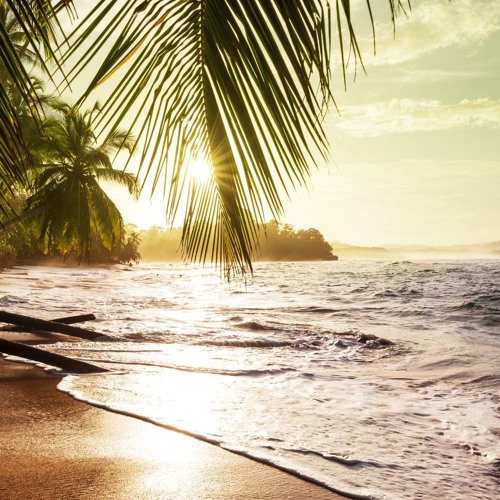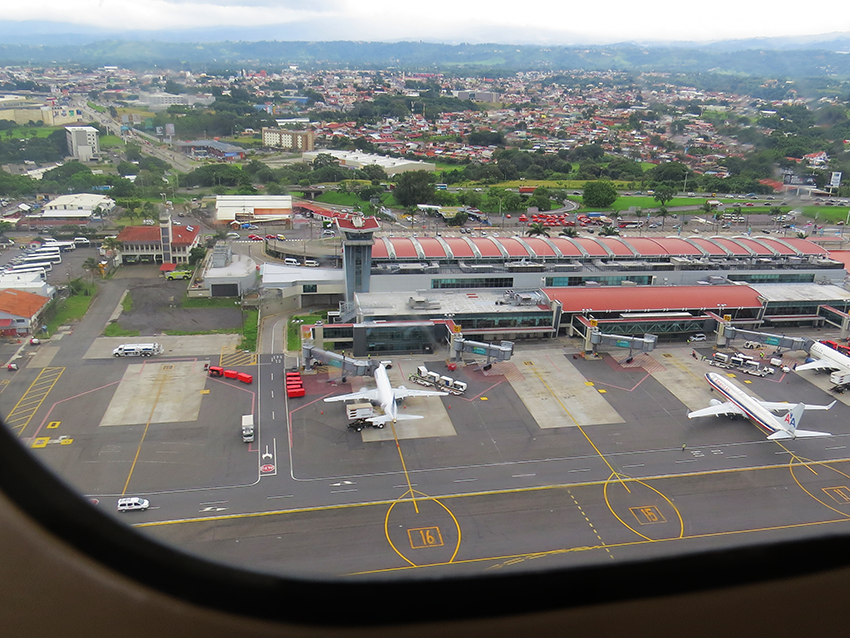Join me, Olga Saenz, in my bilingual podcast about Costa Rica, where I share insights, local secrets, and cultural experiences to help you plan an enjoyable trip. You can listen while multitasking and immerse yourself in the beauty of my unique country!
Continue readingThe Caribbean Coast of Costa Rica: An Introduction
The Caribbean Coast of Costa Rica is an underrated and breathtaking destination, rich in experiences and adventure. It embodies the essence of “Pura Vida,” showcasing vibrant biodiversity, colors, and a joyful lifestyle. This region is a sensory delight, filled with unique music and coconut-flavored cuisine, shaped by a resilient culture and history. The Limón Province, named after a former lemon plantation, serves as a crucial gateway for exports, especially after the Panama Canal’s construction.
Geographically, it features 212 kilometers of flat shoreline with rough waters and includes beautiful rainforests in the north, ideal for witnessing sea turtle nesting. With a population of nearly 400,000, the Caribbean Coast offers unforgettable experiences waiting to be discovered.
Tipping in Costa Rica
When it comes to tipping in Costa Rica, it’s crucial to understand the tipping culture to know what to anticipate and how much cash to carry.
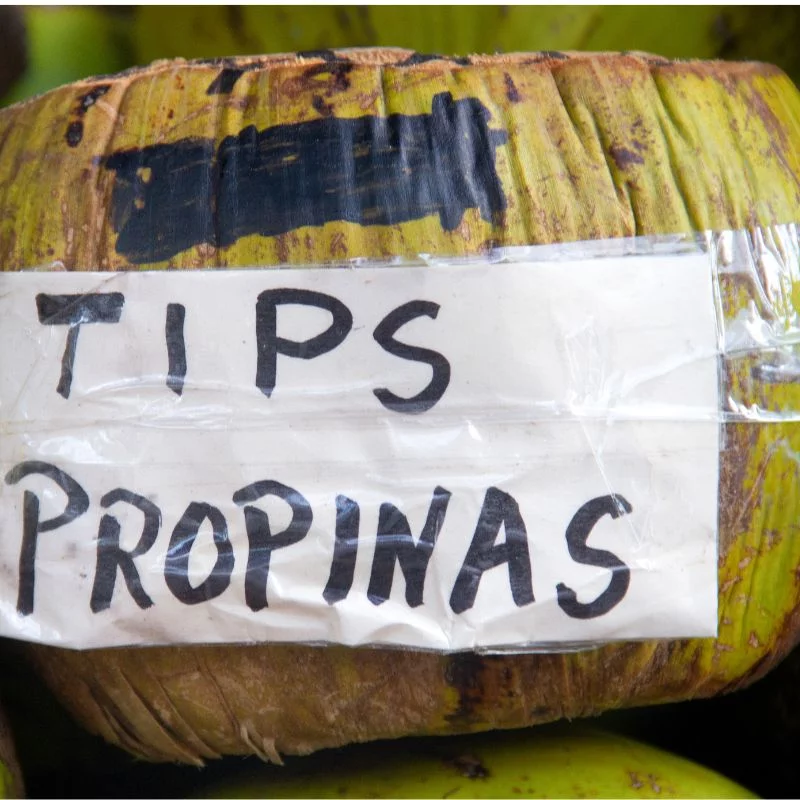
Tipping in Costa Rica has slowly become part of our touristic culture, with all the influence we get from the U.S. But it is important to note that by law in Costa Rica, there is a 10% service charge included in all our bills. However, Costa Ricans usually smile and please people as a part of who we really are.
However, since 1990, when tourism burst as the primary industry and it generalized all over the country, tipping has become part of our day-to-day lives.
Little by little, people have been developing the habit, but it is essential to realize that you are already paying ten percent of your bill, and legally, the owners of the businesses have to give the cash to the whole team, and they will share it.
Nevertheless, although entirely voluntary, gratuities in Costa Rica, especially in the tourism industry, are well received and appreciated.
The tipping etiquette in Costa Rica for visitors is that it is never necessary but always appreciated. Especially considering Costa Rica’s minimum salary is low, the tourism business has been closed due to the epidemic.
Tipping in Costa Rica: Do You Use Dollars or Colones?
You can tip in Costa Rica’s colones or US dollars. Locals routinely take US dollars, preferably as the currency rate changes almost every day, and for many of them, tips are a usual source of income.
You will find a tips box in some tours and areas, and these are gratuities shared among the whole team.
Other currencies, such as Canadian Dollars, Euros, or British Pounds, will be extremely hard to change in our banking system.
Restaurant Tipping Culture in Costa Rica
The service tax, also referred to as a gratuity or tip charge, is something that restaurants in Costa Rica are required to include in their menu prices by law. The sales tax is 13%, while the service fee (tip) is 10%.

However, some restaurants do not include taxes in their menu pricing and will put “taxes not included” or “impuestos no incluidos” anywhere on the menu. If neither tax is included, expect to pay an additional 23 percent on top of the menu price. If just service tax is not included, it is an additional 10%.
Restaurants will indicate this somewhere on the menu if all taxes and tips are included.
Some establishments in more touristy places may give you an extra receipt with a tip section. You don’t have to tip more if you don’t want to, since you’ll pay an additional 23 percent on top of your bill.
Tip Etiquette in Costa Rica when talking about tour guides
Some tour operators will provide tip boxes (especially on adventure tours). Again, this is entirely optional. You can tip in either USD or CRC, and the amount will be shared by the whole team, including drivers, and sometimes they even cook.

If you think they did a good job, feel free to tip 10% of your tour rate—or more. And if you find someone in the team that you want to gratify, especially, our suggestion is to call her or him apart.
If you hire a private driver who speaks English and escorts you around, we recommend tipping 10% or more.
Taxi Tipping
Tipping taxi drivers is not customary in Costa Rica. And on Uber, the app asks you about it.
Hotel Maid Tipping Etiquette in Costa Rica
We usually try to leave something for the maids because they don’t make much money here. You can leave around US$ 2 per day.
Informal parking “guards.”
You can find them in many places, wearing orange vests. They’ll approach your automobile and bill you for parking while claiming to “watch your car.” However, it is crucial to emphasize that they are not official and do not own the parking lot. Furthermore, they lack insurance and will not be held liable if anything happens to your car or valuables.
They can also be quite pushy in trying to convince you to park in “their area.” They can also charge foreign visitors exorbitant fees to park in their area during the holidays, although they’re not even official parking guards or insured. This is especially true in popular tourist destinations such as Manuel Antonio National Park and Tamarindo Beach.
Finally, if at all possible, we avoid parking in unapproved areas. Unfortunately, most parking in Costa Rica is unauthorized, so our recommendation is to pay them afterward.
Some ideas for tipping in Costa Rica:
- Tipping in coins is considered bad taste, and they may even return it to you. Not a good idea.
- If you are going with a guide or driver for several days, an envelope with a small note will be much appreciated.
- Checks are extremely hard to cash for Costa Ricans. Be prepared with cash.
- Recognize that Costa Rican banks won’t accept torn or stained bills.
To wrap it up,
Tips in Costa Rica are not only accepted but also encouraged. However, we completely recognize that all jobs in Costa Rica are paid, and tips are always a voluntary extra that our visitors give to show appreciation for a job well done.
This post appeared first on Epic Adventures Costa Rica. It is written by Olga Sáenz
International Airports of Costa Rica – A Simple Guide.
Costa Rica has two major international airports that serve as crucial gateways for travelers: Juan Santamaría International Airport (SJO) in Alajuela, near the capital San José, and Daniel Oduber Quirós International Airport (LIR) in Liberia, Guanacaste. SJO is the largest and busiest airport, offering connections across the Americas and Europe, while LIR mainly caters to the popular beach destination of Guanacaste. Both airports provide amenities like duty-free shopping, dining, and transportation options to get you to your final destination in Costa Rica.
Continue readingBest Activities in Arenal
Looking for the best activities in Arenal? Discover thrilling adventures like hiking the Arenal Volcano, zip-lining through the rainforest, and relaxing in natural hot springs. Experience the beauty of La Fortuna with unique cultural encounters and unforgettable outdoor experiences.
Continue readingCorcovado or Tortuguero? What’s the best destination for your trip?
Corcovado or Tortuguero? A hard choice if you don’t have the time to do both. Both are stunning rainforests and offer abundant wildlife. Both are hot and humid, and it really depends on some conditions on you to enjoy more one or the other.
Corcovado or Tortuguero shouldn’t be a question; as for a real nature lover, the decision would be to stay longer and enjoy both.
However, it also happens that you want to see a volcano and spend some time just lying under the sun.
So well! Let\’s choose!
First of all, where are Corcovado and Tortuguero?
As you will see in the map below, Tortuguero is in the North Caribbean, and Corcovado is almost in its opposite, in the South Pacific.
What do Corcovado and Tortuguero have in common?
Both Tortuguero and Corcovado are known to have certain conditions in common:
- They are hot and humid.
- They both are low in height above sea level.
- In both, we see pretty much the same rainfall.
- They have approximately the same biodiversity, and wildlife sightings are very common in both places.
- Both are remote and isolated.
- Both are luscious and gorgeous.
- In both, you may find beautiful and comfortable accommodations.
- If flying from San José (SJO), you are 45 minutes away from both.
Read here 10 tips to fully enjoy your family trip to Costa Rica
So! What are the differences between Tortuguero and Corcovado?
The first big difference would be in the driving distance from San José; Tortuguero is closer than Corcovado if you are driving.
However, if you are flying, they are both, more or less, at the same 45-minute distance from San José.

Now the question should be actually:
Where are you coming from to see Corcovado or Tortuguero?
Well!
Tortuguero is closer than Corcovado to Sarapiqui, Turrialba, Cahuita, and Puerto Viejo in the South Caribbean and pretty much at the same distance from Monteverde or any of the Guanacaste regions and beaches.
Corcovado is closer than Tortuguero to Dominical, Manuel Antonio, Perez Zeledon, all of the Central Pacific, and the Nicoya Gulf.
Same distance to Guanacaste regions and to Monteverde.
Listen or read about the International Airports of Costa Rica here
What are the other differences?
Tortuguero can be seen from three main areas (see the map below in dark red):
- The Jaloba Park Ranger Station, which is at the entrance of the National Park on the South, staying in the region of Parismina to see it.
- The Cuatro Esquinas Station, which is closer to Tortuguero Village and the main hotels.
- And the Palma Biological Research Station, which is by the Tortuguero Mountain and on the way to the San Juan River.
None of them are accessible by land.
And even by plane, you must have a boat to take you from the airport to the hotels or villages.
Corcovado has two gateways: Carate (getting in by Puerto Jiménez) and Drake Bay.
- Puerto Jiménez will get you to the southern part of the National Park, in Carate Beach and La Leona Park Ranger Station. You can also reach the Golfo Dulce and all its richness and fantastic isolated lodges and hotels. (See in the map in light blue.)
- And Drake Bay on the North that is reachable by air and by boat (from Sierpe in Palmar Sur). From there you can also get to the Biological Reserve Isla del Caño (Caño Island) and its super diverse marine fauna and flora.
You can reach both Carate and Drake Bay by land, but only on a four-wheel drive.
What are Corcovado and Tortuguero about?
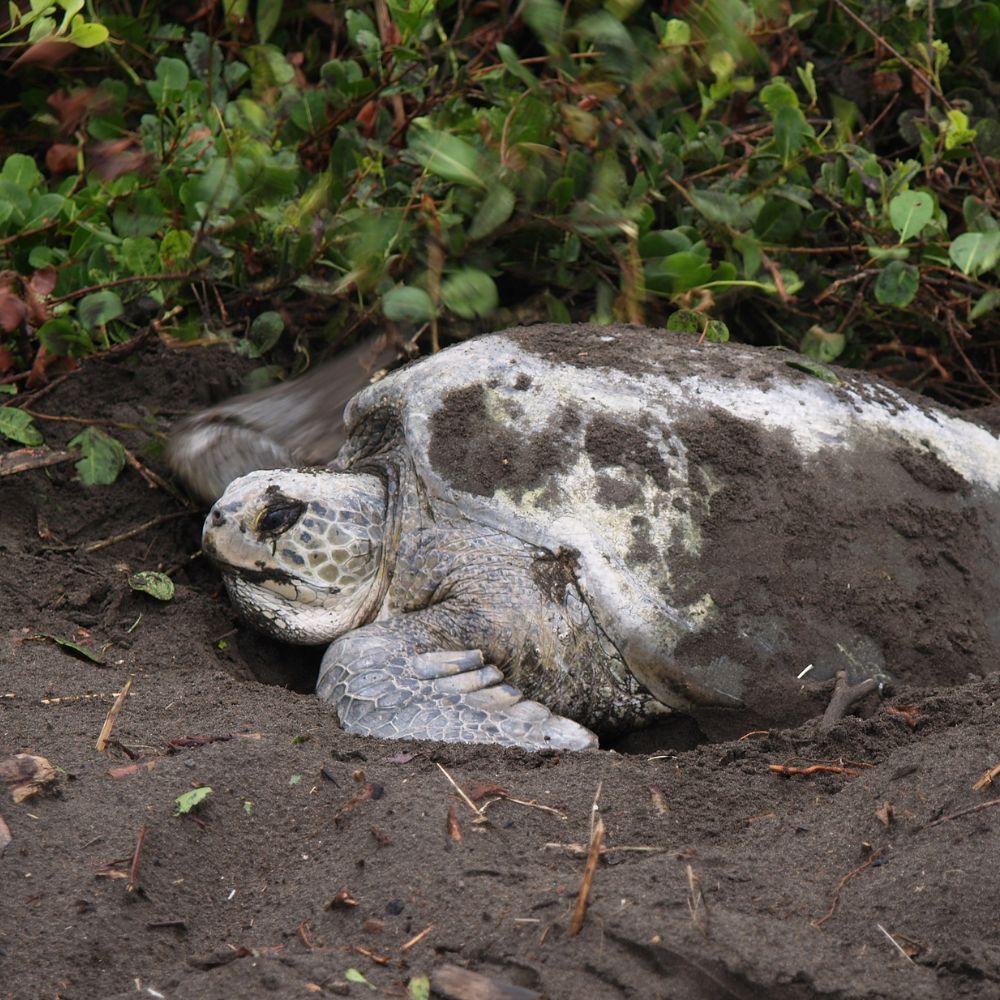
While Tortuguero is about the rainforest and the sea turtles in their season (July to September to see the nesting), Corcovado is about the ocean and the rainforest, making it clear that we are talking about the ocean wildlife and not jet skiing.
In Tortuguero, in the turtle season, for the nights you are there and if you pay the tours, you can witness the amazing turtle nest making and eggs laying. The days will be spent exploring the breathtaking beauty of its rainforests and the wildlife sightings, which are pretty common.
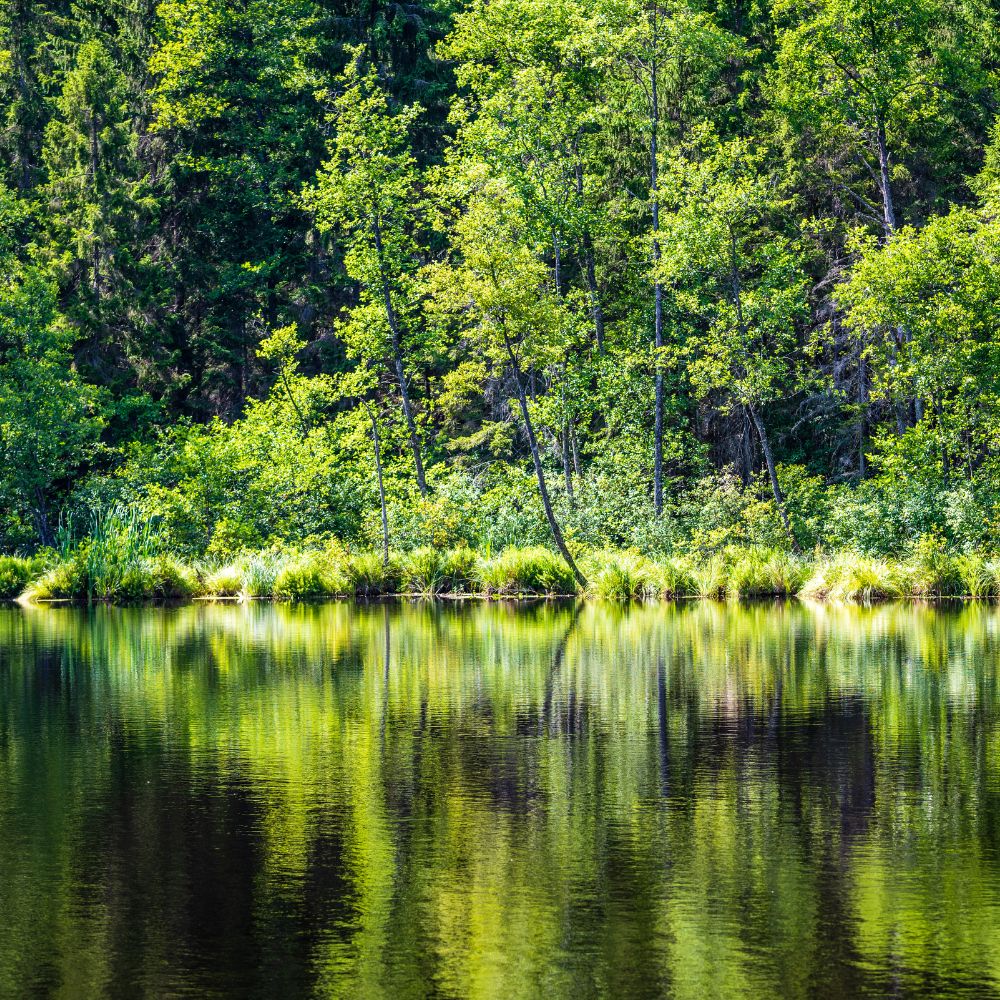
In Corcovado, while in the hotel and in the National Park, you will witness one of the most intense rainforests of the world. The ocean can also provide a lot in terms of wildlife sightings, as this is an area where whale and dolphin sightings are pretty common.
You can snorkel or dive in Isla del Caño (Caño Island), and you can also enjoy in some areas the waves or kayaking in mangrove forests.
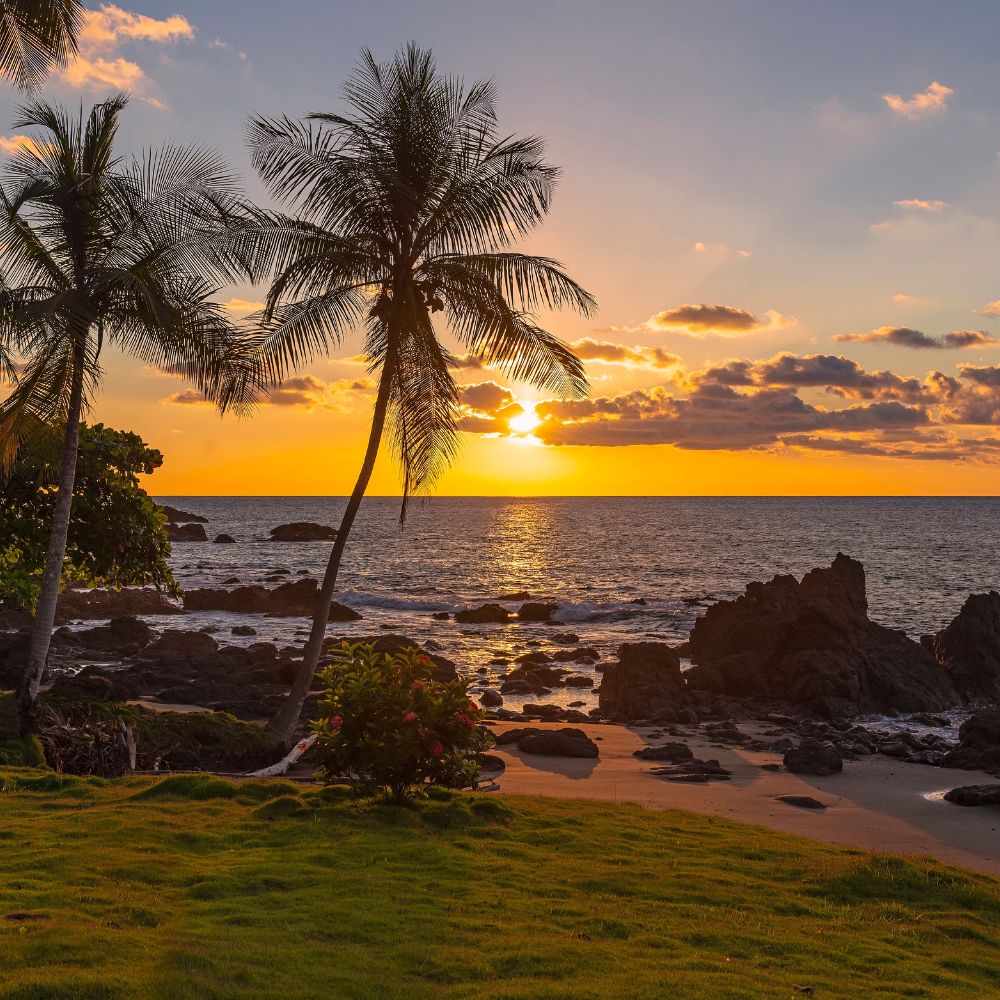
So, Corcovado is about rainforests and marine life.
Corcovado National Park boasts intense marine life, making it a unique destination where you can witness whales, dolphins, and a plethora of other species while journeying to one of the most biodiverse places on the planet.
Unlike Tortuguero, which primarily focuses on exploring its canals and observing wildlife from a distinctive vantage point, Corcovado offers an immersive experience in both its rich terrestrial and vibrant marine ecosystems, providing a comprehensive glimpse into Costa Rica’s incredible biodiversity.
Then again, the answer to Corcovado or Tortuguero if you could only choose one lies on…
What else do you want to do in Costa Rica, and how long do you have to do it?
If you have all the time, money can come any time of year, and you are a true nature lover:
Go to both! You will enjoy their similarities and differences very much! Stay in Tortuguero for at least two nights and in Corcovado for at least three nights.
You can also read Tamarindo or Manuel Antonio?
Usual choices that can determine if Corcovado or Tortuguero?
If you have all the money and time to visit but can’t come whenever you like:
The best months to visit Corcovado are from November to April.
The best months to visit Tortuguero are March and April and definitely September and October (sunny, affordable, and empty).
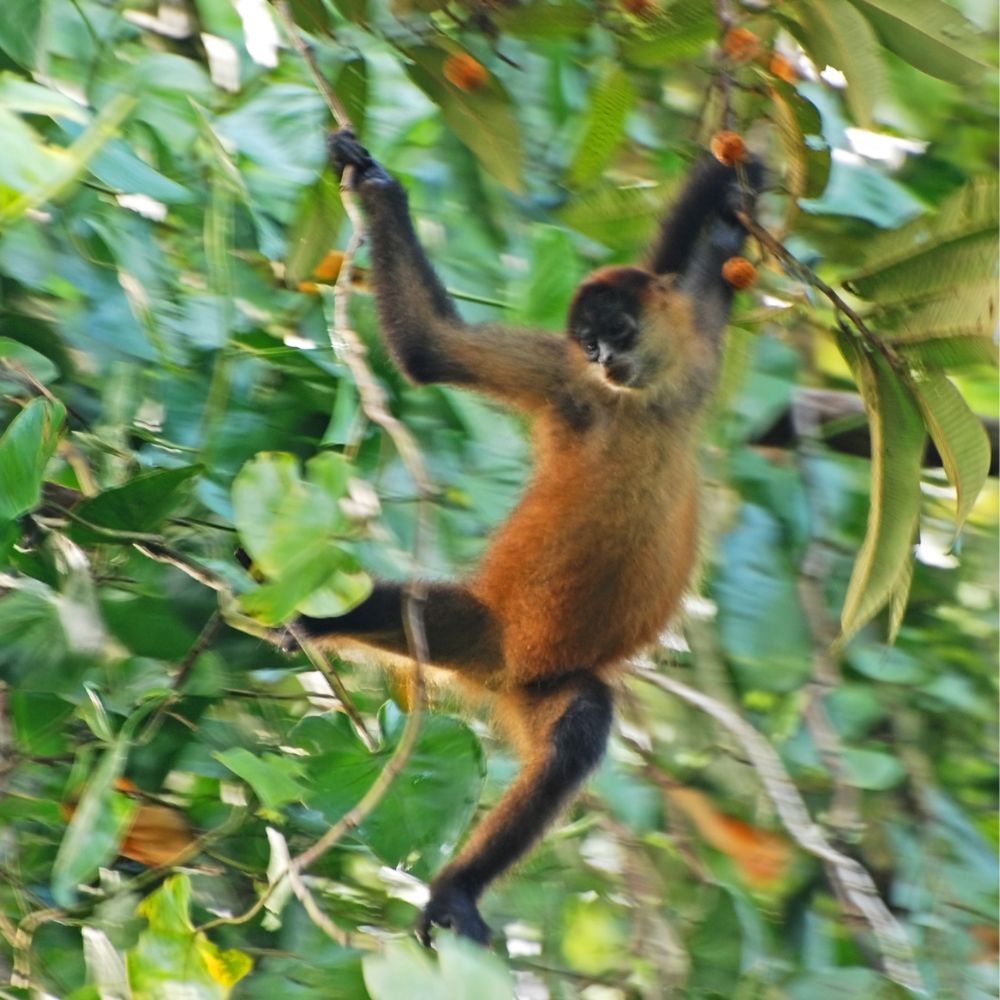
Corcovado or Tortuguero? If you have the time but not as much money and not whenever you want, go to Tortuguero. You will find, in general, Corcovado accommodations and transportation can be more expensive.
Corcovado or Tortuguero? If you want to visit a volcano and cannot do both because of time issues, go to Tortuguero. It’s closer to the very active Turrialba Volcano and the diverse Arenal Volcano Region.
Sloths are abundant in both national parks.

Corcovado or Tortuguero? If you want to go for leisure and rest in a nice resort after the rainforest, go to Corcovado. It is closer to Manuel Antonio, where you can find some breathtaking resorts to enjoy the beach.
Corcovado or Tortuguero? If you don’t have all the time in the world but can spare three nights (and not really into a volcano): Go to Corcovado. You will enjoy more diversity of activities as you have one day for the rainforest and another one to go in the ocean in Isla del Caño.
If you like diving or snorkeling, go to Corcovado.
If you come in July, August, or September, Definitely Tortuguero is your place, as you will witness the massive sea turtles nesting.
If you love kayaking on flat water, Tortuguero is your place.
If you cannot live without AC but love nature, Corcovado is your destination.
If luxurious and extremely comfortable accommodations are a must for your vacation, in the Osa Peninsula, you will find more luxury than in Tortuguero.
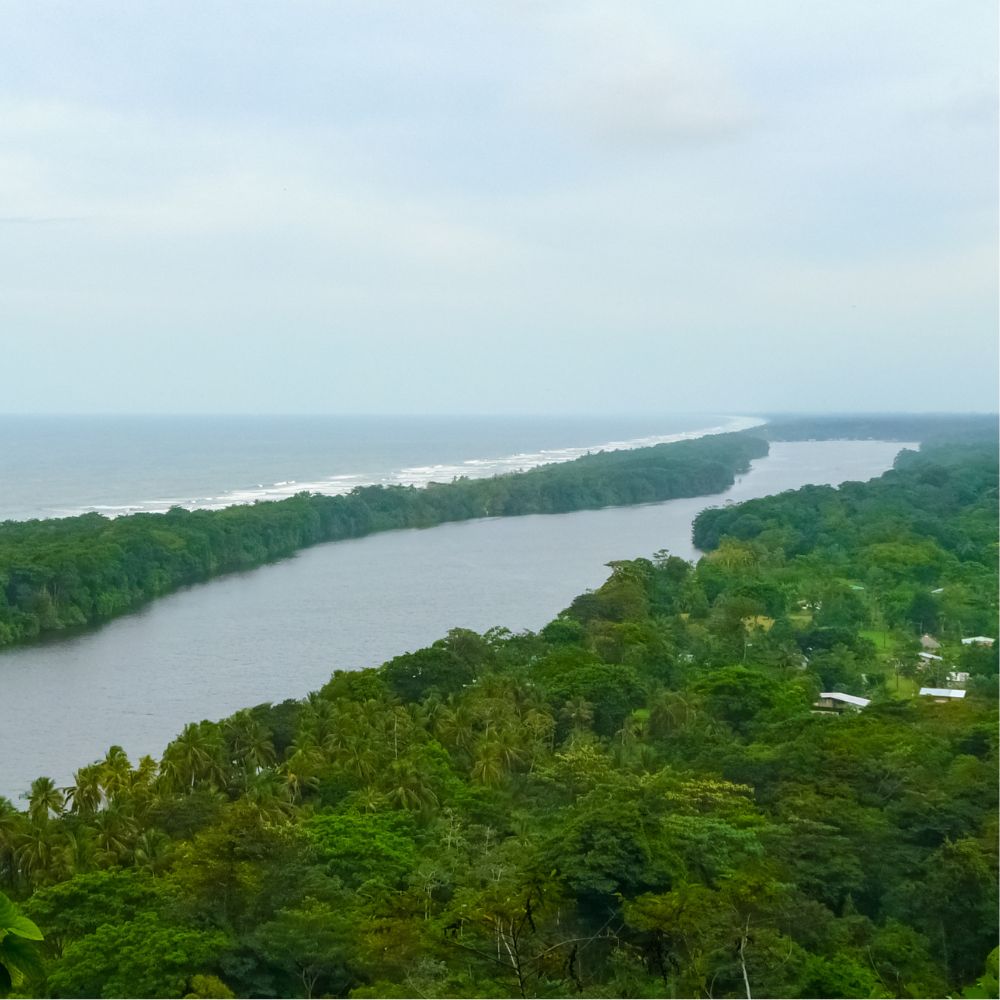
Now… don’t go to either if you are into only beach, leisure, and rest in a gorgeous hotel. Both destinations are about the jungle.
If you want big beach resorts and volcanoes with rainforest, we would recommend going into Liberia and visiting Guanacaste, its gorgeous beaches, and Arenal or Rincon de la Vieja Volcanoes and National Parks.
But most of all, ask questions! If you have a good local travel agent, ask him or her about these two destinations. If you are planning the trip by yourself or would like to get in contact with an expert to ask some questions, I would be more than happy to help.
Costa Rica Travel Safety Tips
Discover essential tips for enjoying a safe trip to Costa Rica. From checking visa requirements to selecting authorized tour operators, we guide you in planning an unforgettable journey. Make sure to stay informed about weather conditions and follow safety instructions during your tours
Continue readingCosta Rica in the Rainy Season: The Things You Should Know
Discover the unparalleled beauty of Costa Rica in the rainy season. From vibrant green landscapes to dramatic sunsets and abundant wildlife, the rainy season offers a unique and unforgettable experience. Explore the diverse microclimates, enjoy less crowded attractions, and take advantage of more affordable travel options. Whether you’re hiking through lush forests or experiencing the thrill of whitewater rafting, Costa Rica’s rainy season is a paradise for nature lovers and adventure seekers alike.
Continue readingWalk By Yourself in the Monteverde Cloud Forest at Least Once
Monteverde is home to some of the most stunning cloud forest reserves in the world. From the Curicancha Reserve to the Monteverde Cloud Forest Reserve, each offers unique trails teeming with diverse wildlife and breathtaking views. These reserves are designed for exploration, allowing you to wander at your own pace and truly connect with nature. Whether you’re an experienced hiker or a first-timer, walking alone in this magical environment will leave you with unforgettable memories and a newfound appreciation for solitude
Continue reading
